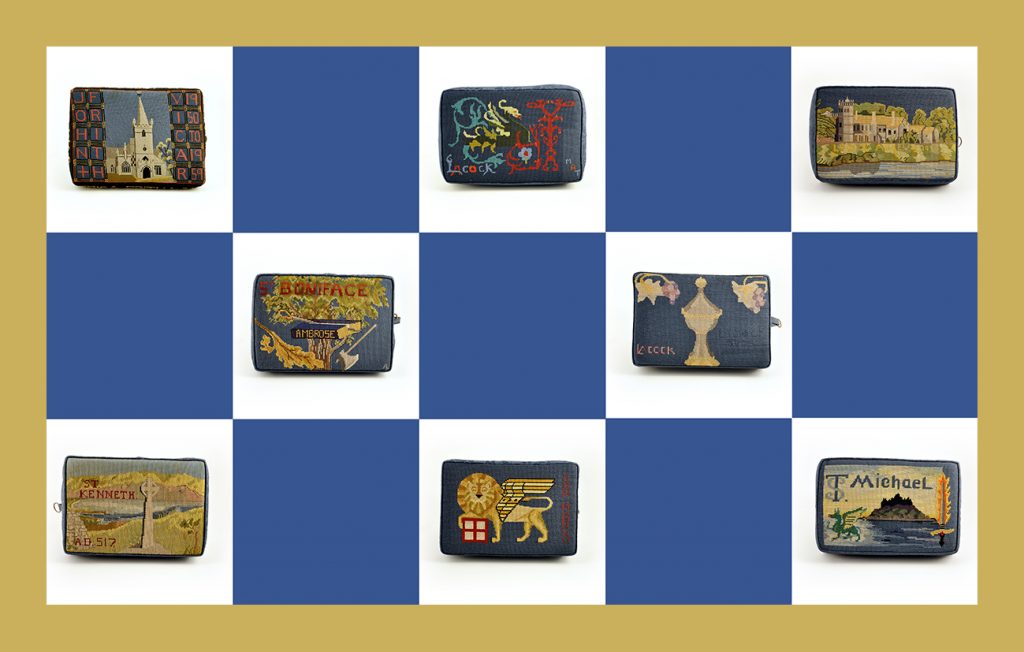FEATURES
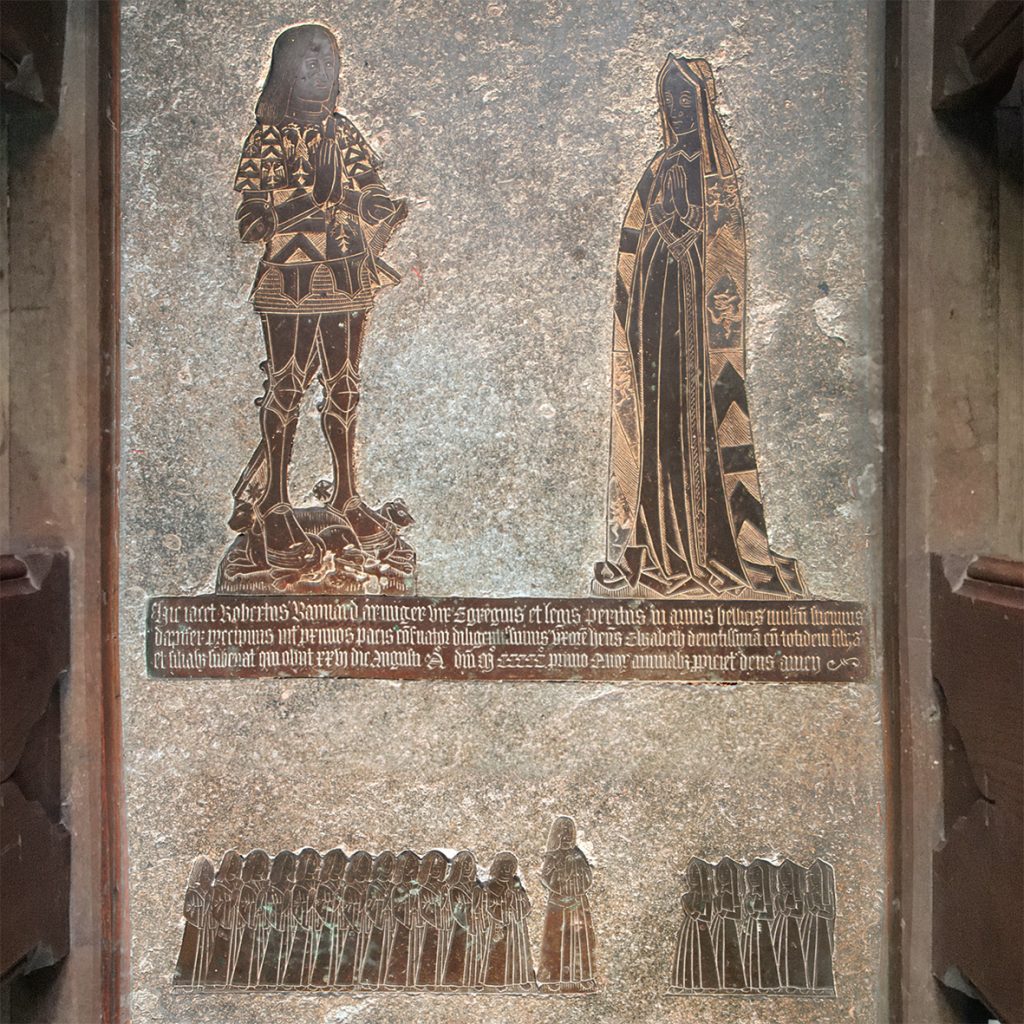
The Baynard Brasses
Dating from 1501, 71cm long
The brasses on the floor of the Lackham aisle show Robert Baynard (c.1430-1501) and his wife Elizabeth Ludlow praying, while dressed in the full, and surprisingly detailed, regalia of a knight and his lady of the manor.
Below them are diminutive representations of their 18 children, the sons on the left (the eldest Philip shown a fraction larger, and next to him George shown with the shorter hairstyle of a priest) and the daughters on the right. Elsewhere in the church, the Baynard coat of arms appears in the 16th-century outer porch, where the roof’s beautiful tierceron vaulting arches over what was once called the marriage porch.
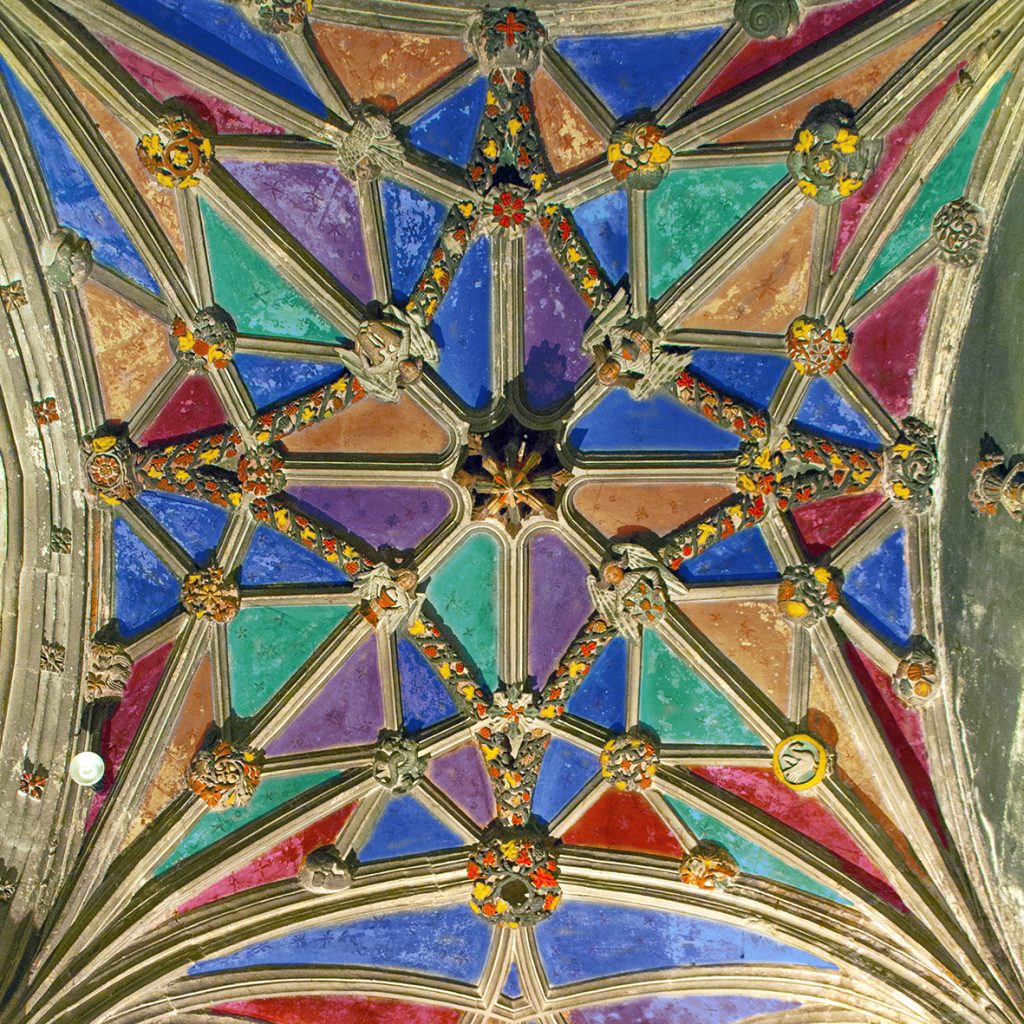
The Lady Chapel
2-bay polychrome ceiling, 15th century; with fan and lierne vaulting, decorated caps, pierced pendants and floral ribands
The Lady Chapel presents a glorious piece of highly carved, and originally highly-coloured vaulting (here digitally recreated), probably dating from 1430.
Bright primary tints of azurite greens or blues, red vermillion, and gold would have reflected lavish expense: an act of worship, as well as, in the case of the Sharington tomb, a demonstration of high societal position. There is an abundance of natural forms and curious creatures: a golden-antlered stag, a two-headed swan, hares, harpies, and fighting dragons. More centrally, in the bay seen above, four guardian angels carry symbols of the Eucharist and heraldic shields in a quadrant.
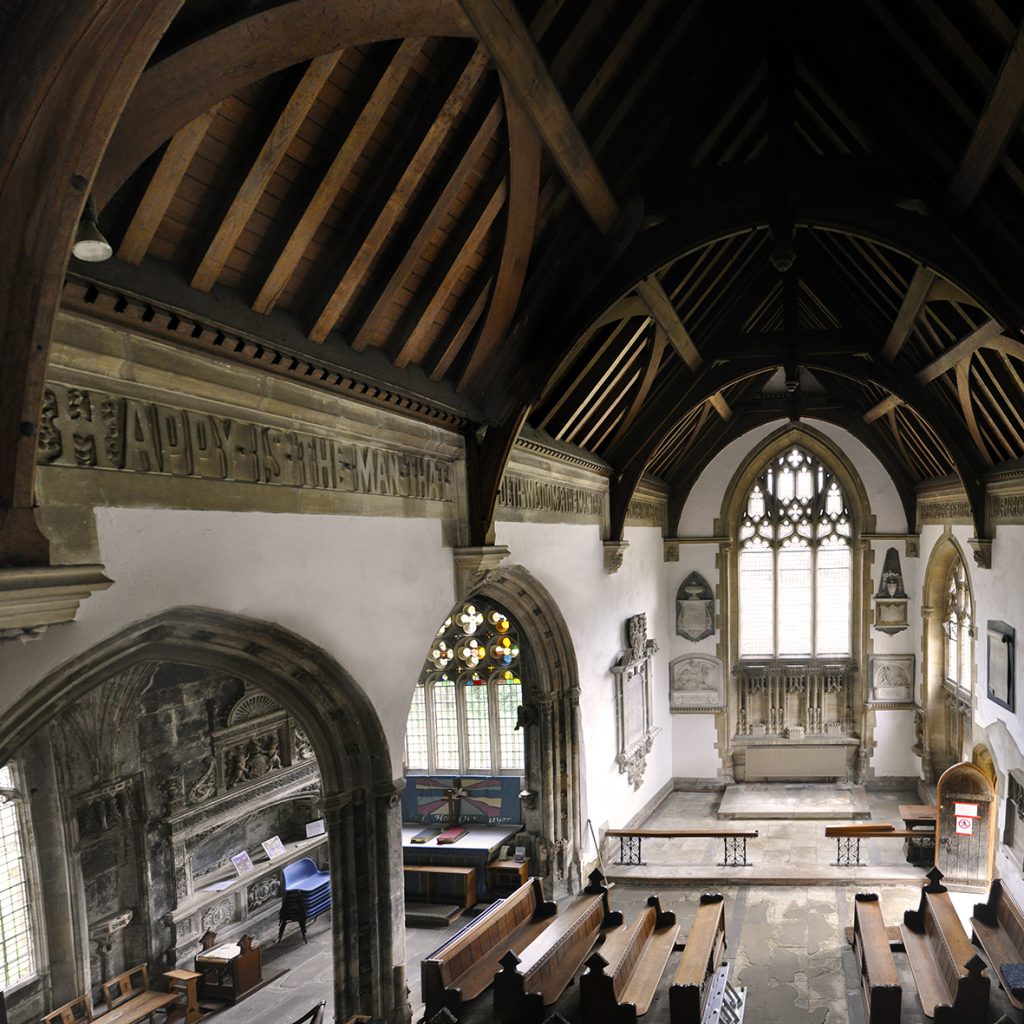
The Chancel
Dedicated to William Henry Fox Talbot in 1902, designed by Sir Harold Brakspear
At St Cyriac’s, the Talbot family have been longstanding patrons of the church since the 16th century, closely involved in the community welfare for which the church was the traditionally appointed authority.
William Henry Fox Talbot’s experiments at Lacock Abbey in the 1830s led him to invent the negative-positive photographic process, a revolution in image reproduction. St Cyriac’s is the first church to be photographed in the world. As well as taking images of the church, Fox Talbot photographed Hebrew texts from the Psalms and wrote about Genesis in the Bible. The verse in the Chancel dedicated to him is from Proverbs 3:13,14:
‘Happy is the man that findeth wisdom and the man that getteth understanding: for the merchandise of it is better than silver and the gain thereof than fine gold.’
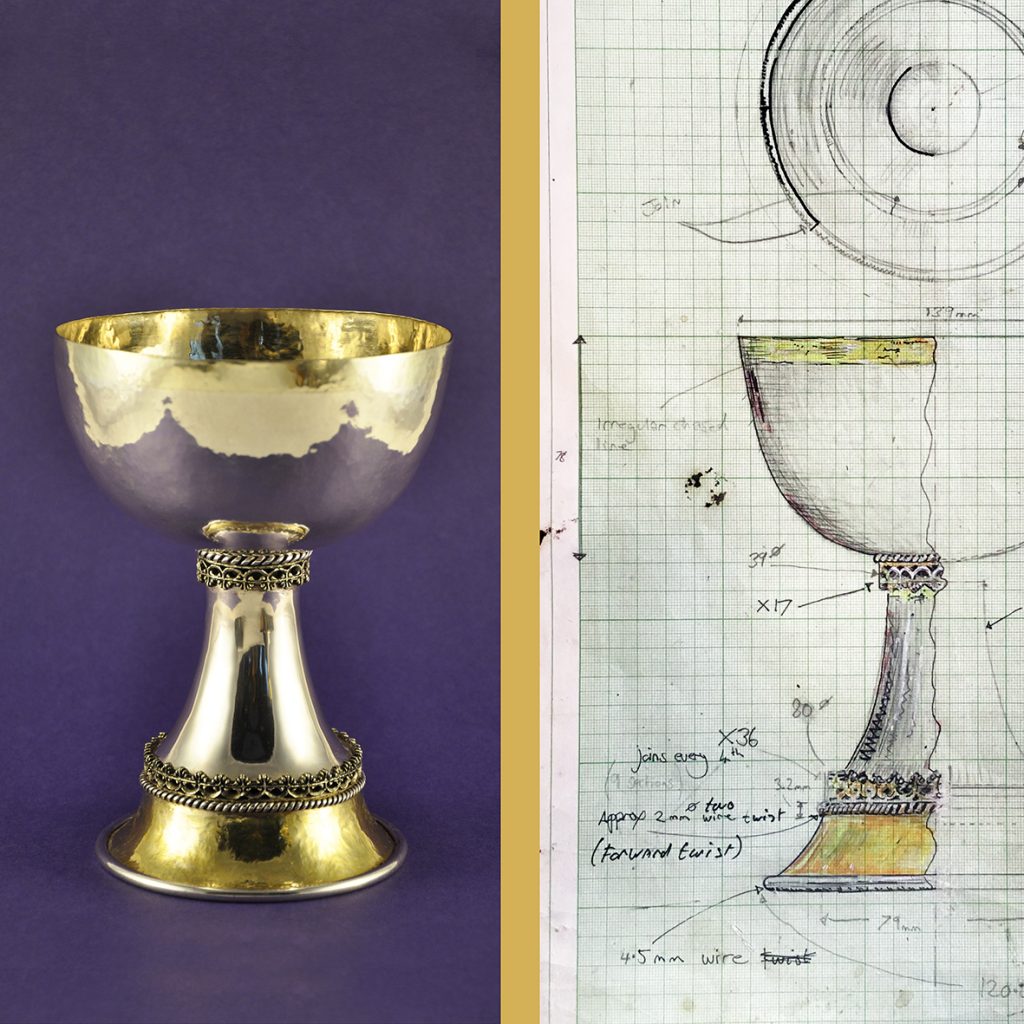
The LAcock Cup
Plain and gilded silver, 15th Century; British Museum 2014, 8002.1
A rare masterpiece from the 15th century, the original Lacock Cup was made for someone of importance for secular use as a communal drinking goblet at feasts.
Subsequently used for centuries as a communion chalice at St Cyriac’s, the Cup was purchased jointly by the British Museum and the Wiltshire Museum in 2013, and a replica created by craftsman Mike Neilson for use at the church. The replica shares with the original its construction in two parts from 1kg of hammered silver, with gilt details. Its use at special celebrations of the Eucharist in St Cyriac’s ensures a continuing link with the church’s most celebrated artefact.
On the outside of the building, you’ll find a collection of ‘exceptionally inventive gargoyles’ (Pevsner), or grotesques, as most are purely decorative. Our famous pipe-smoking gentleman is found on the north side.
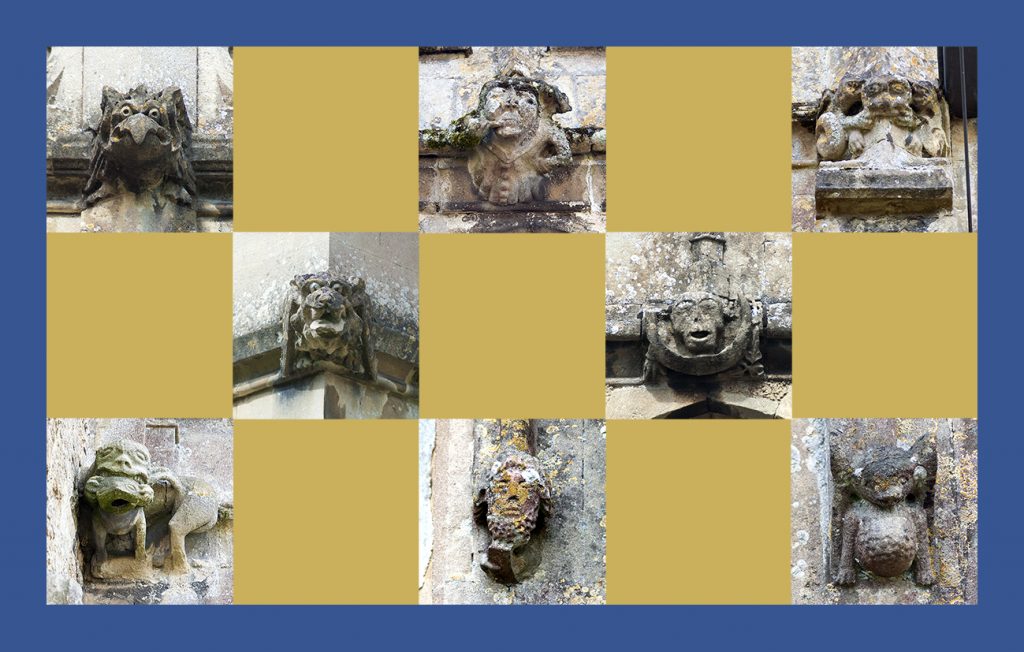
St Cyriac’s has a historically significant collection of over 200 kneelers, designed and sewn by parishioners and friends in the 1950s. The designs celebrate local heritage, saints, and the natural world, and were recently restored in 2018.
